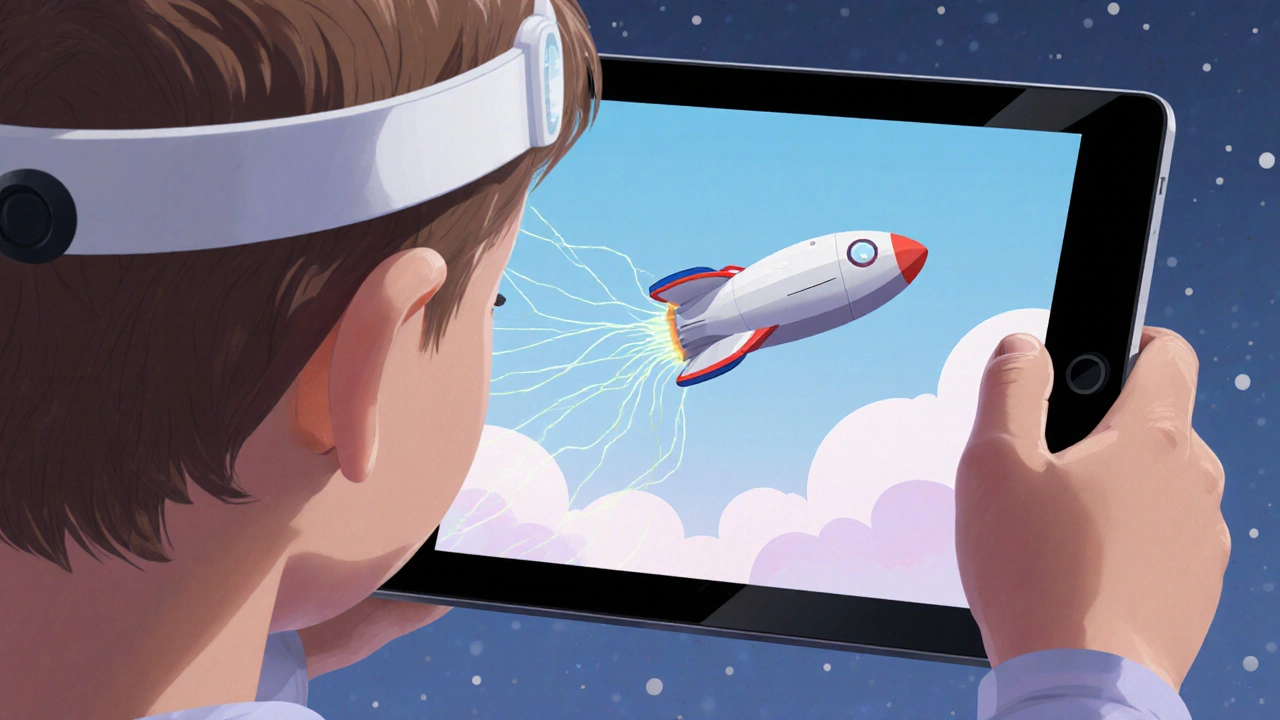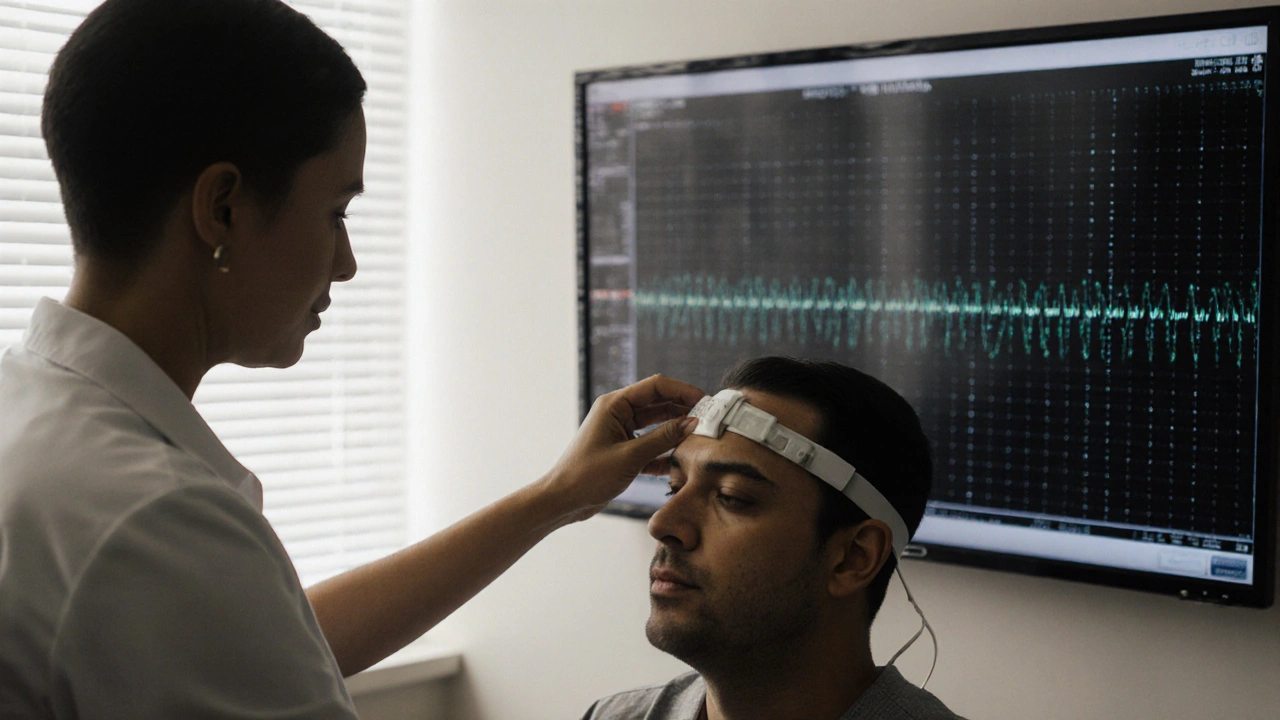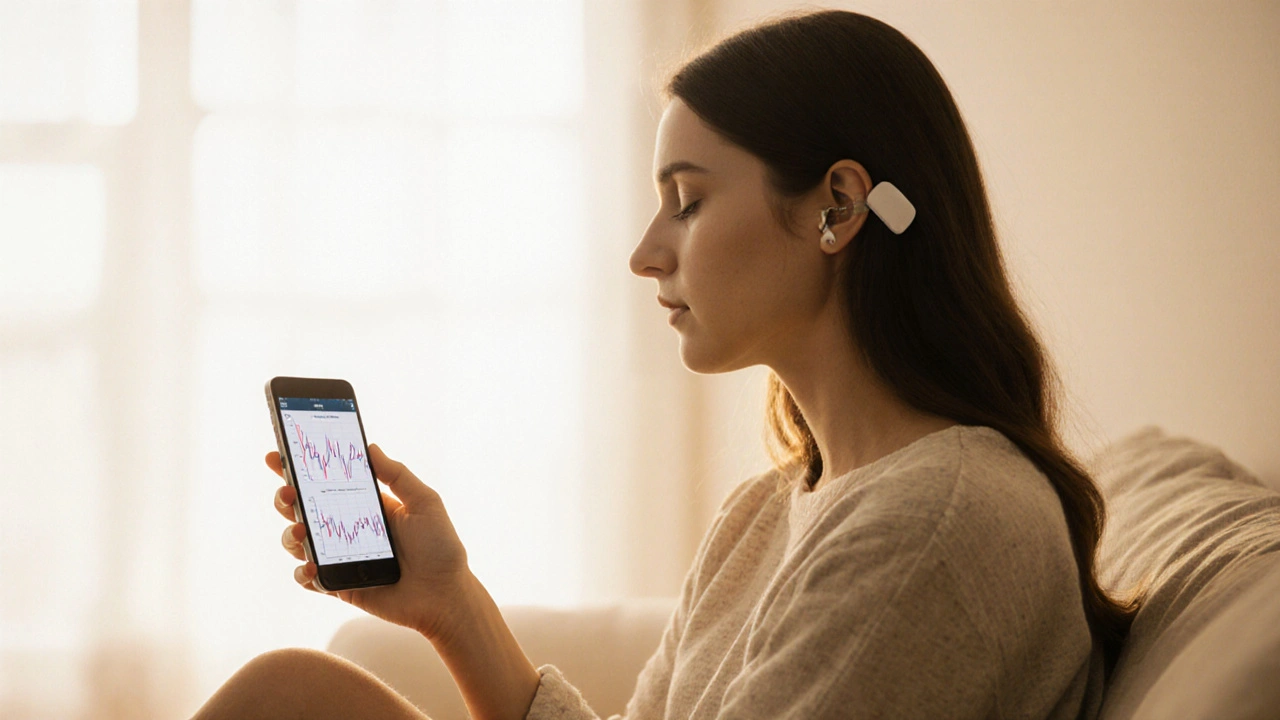Biofeedback Effectiveness Calculator
Calculate potential improvements from biofeedback training based on scientific studies. Note: This tool provides estimates only and is not medical advice.
How This Calculator Works
Based on clinical studies referenced in this article, biofeedback can reduce migraine days by 45%, lower blood pressure by 10-15 mmHg, and reduce anxiety symptoms by 80% for 70% of participants after 10 sessions. Your estimates below reflect the average improvements reported in these studies.
What if you could learn to calm your nervous system just by watching your own heartbeat? Or reduce chronic headaches by seeing your muscle tension on a screen? This isn’t science fiction. It’s biofeedback-and it’s been helping people take control of their health for over 50 years.
What Exactly Is Biofeedback?
Biofeedback is a technique that uses sensors to measure invisible bodily processes-like heart rate, muscle tension, skin temperature, or brain waves-and turns them into real-time signals you can see or hear. The goal? To teach your mind how to gently influence these automatic functions.
Your body does a lot without you thinking about it. Breathing, digestion, blood pressure-all handled by your autonomic nervous system. But with biofeedback, you’re not just observing. You’re training. Think of it like learning to ride a bike. At first, you wobble. But with feedback-seeing your balance, feeling the tilt-you slowly get better. Biofeedback gives you that same visual or auditory feedback for your internal state.
It’s not magic. It’s neuroscience. Studies from the Journal of Clinical Psychology show biofeedback helps reduce migraine frequency by up to 50% in chronic sufferers. The American Heart Association recognizes it as an effective tool for managing hypertension. And NASA even uses it to help astronauts regulate stress in zero gravity.
How Biofeedback Works: The Science Made Simple
Your body sends out signals all the time. Biofeedback devices just catch them and translate them into something you can understand.
Let’s say you’re stressed. Your muscles tighten. Your heart races. Your skin gets sweaty. Normally, you might feel these things but not know how to fix them. With biofeedback, a small sensor on your forehead measures muscle tension. That data shows up as a line on a screen. When you relax, the line drops. When you tense up, it spikes. Over time, your brain starts connecting the dots: “When I breathe deeper, the line goes down. So I’ll breathe deeper.”
There are three main types of biofeedback you’ll encounter:
- Electromyography (EMG): Measures muscle activity. Used for tension headaches, back pain, and anxiety-related muscle tightness.
- Thermal biofeedback: Tracks skin temperature. Cold fingers often mean stress. Warming them up signals relaxation. Common for Raynaud’s syndrome and migraine prevention.
- Heart rate variability (HRV): Measures the tiny changes between heartbeats. High HRV = calm nervous system. Low HRV = stressed. This is the gold standard for stress and emotional regulation training.
Some advanced systems even track brainwaves (EEG) or sweat gland activity (GSR). But for most people starting out, EMG and HRV are where the real results happen.
What Biofeedback Can Actually Help With
Biofeedback isn’t a cure-all. But for specific conditions, it’s one of the most evidence-backed non-drug tools available.
Here’s what works:
- Chronic headaches and migraines: A 2023 meta-analysis in Headache: The Journal of Head and Face Pain found biofeedback reduced migraine days by 45% on average-better than many medications, with no side effects.
- High blood pressure: The American Heart Association lists biofeedback as a Class IIa recommendation for hypertension management. People who trained with HRV biofeedback lowered their systolic pressure by 10-15 mmHg in 8-12 weeks.
- Anxiety and panic attacks: By learning to control breathing and muscle tension, people break the cycle of physical panic symptoms. One study showed 70% of participants reduced panic attacks by 80% after 10 sessions.
- Chronic pain: Especially for fibromyalgia and lower back pain. Biofeedback helps retrain the brain’s pain response, reducing reliance on opioids.
- ADHD in children: EEG biofeedback (neurofeedback) is one of the few non-medication treatments with strong clinical support. Children showed improved focus and reduced impulsivity after 30-40 sessions.
It’s not a replacement for medical care. But for people tired of side effects from pills or looking for something to complement therapy, biofeedback fills a real gap.

How to Get Started With Biofeedback
You don’t need a lab coat or a hospital visit to begin. There are two paths: professional sessions or at-home devices.
Option 1: Work with a trained therapist
Start here if you have a diagnosed condition like chronic pain, migraines, or PTSD. Look for a licensed psychologist, physical therapist, or occupational therapist certified in biofeedback. The Biofeedback Certification International Alliance (BCIA) maintains a public directory of certified providers.
Typical sessions last 45-60 minutes. You’ll be hooked up to sensors, guided through breathing or relaxation exercises, and shown your progress. Most people need 8-12 sessions over 2-3 months to see lasting changes.
Option 2: Use a home biofeedback device
For stress, anxiety, or general wellness, consumer devices are now affordable and reliable. Here are three popular ones:
- HeartMath Inner Balance: A Bluetooth sensor that clips to your ear and connects to your phone. Tracks HRV and gives real-time coaching. Used by over 1 million people worldwide.
- Thync: A wearable that uses gentle electrical pulses to shift your nervous system from stressed to calm. Works in under 10 minutes.
- Calm and Focus Headband (EEG-based): Measures brainwave patterns and gives audio feedback to guide you into calm or focused states. Great for meditation beginners.
These devices cost between $100 and $300. Many come with apps that track your progress over weeks. Some insurance plans cover them if prescribed by a doctor.
What to Expect During Your First Session
Walking into a biofeedback session for the first time can feel weird. You’re sitting in a quiet room with wires on your skin. But here’s what actually happens:
- You’re seated comfortably. Sensors are attached-usually to your forehead, fingers, or chest. No needles. No pain.
- You’re shown a screen with a graph or animation. Maybe a flower that opens when you relax, or a bar that drops as your heart rate steadies.
- The therapist asks you to breathe slowly. In for four seconds. Out for six.
- You watch the screen. At first, nothing changes. You think, “This isn’t working.”
- Then, you take one deeper breath. The graph moves. The flower opens. You feel it-the shift.
- That moment? That’s the breakthrough. Your brain says, “I did that.”
Most people leave their first session surprised. Not because they’re instantly calm, but because they finally understand how their body responds to stress. That awareness is the first step to real change.
Common Misconceptions About Biofeedback
There’s a lot of hype-and misinformation-around biofeedback.
Misconception 1: It’s a quick fix.
It’s not. Biofeedback is like physical therapy for your nervous system. You wouldn’t expect one gym session to fix chronic back pain. Same here. Real change takes consistent practice over weeks.
Misconception 2: It’s just relaxation techniques with a fancy screen.
No. Relaxation techniques help. But biofeedback gives you objective proof of whether they’re working. Without it, you’re guessing. With it, you know. That’s the difference between hoping and knowing.
Misconception 3: You need to be “good” at meditation.
You don’t. In fact, people who struggle with meditation often benefit the most. Biofeedback gives them something concrete to focus on-instead of chasing empty thoughts.

Who Should Avoid Biofeedback?
Biofeedback is safe for almost everyone. But there are a few exceptions:
- People with implanted electronic devices like pacemakers or defibrillators (some sensors can interfere).
- Those with severe psychiatric conditions like psychosis-biofeedback can sometimes trigger dissociation if not guided properly.
- Children under 6-most devices require focus and cooperation that young kids can’t sustain.
If you’re unsure, talk to your doctor. But for most people, the risks are near zero. The rewards? Better sleep, fewer headaches, less anxiety, more control.
Why Biofeedback Is the Missing Piece in Modern Wellness
We live in a world full of advice: “Meditate more.” “Breathe deeply.” “Just relax.” But no one tells you how to know if you’re doing it right.
Biofeedback fixes that. It turns abstract advice into measurable progress. You don’t just feel calmer-you see it. You don’t just hope your blood pressure dropped-you have the data.
It’s the difference between being told how to ride a bike and being given a balance meter that tells you exactly when you’re leaning too far. You learn faster. You stay motivated. You stick with it.
And in a time when stress is at record highs and mental health services are stretched thin, biofeedback offers something rare: a tool that puts the power back in your hands-no prescription needed.
Can biofeedback really lower blood pressure without medication?
Yes. Multiple clinical trials, including one published in the American Journal of Hypertension, show that 12 weeks of heart rate variability biofeedback can reduce systolic blood pressure by 10-15 mmHg on average. This is comparable to the effect of some first-line medications, but without side effects like dizziness or fatigue. It works by training the autonomic nervous system to stay balanced, reducing chronic stress that drives high blood pressure.
How long does it take to see results from biofeedback?
Most people notice subtle changes-like better sleep or less tension-after 3-5 sessions. For measurable improvements in conditions like migraines or blood pressure, it typically takes 8-12 sessions over 2-3 months. Like building muscle, consistency matters more than speed. Daily 10-minute practice at home with a device speeds up results significantly.
Are home biofeedback devices accurate?
Yes, the best consumer devices are clinically validated. Brands like HeartMath and BioGraph Infiniti have published peer-reviewed studies showing their sensors match hospital-grade equipment within 5-8% accuracy. They’re not meant to replace medical diagnostics, but for tracking trends in stress, relaxation, and recovery, they’re reliable enough for daily use.
Is biofeedback covered by insurance?
Some plans cover biofeedback if it’s prescribed by a licensed provider for a diagnosed condition like migraines, hypertension, or chronic pain. Medicare and many private insurers in the U.S. and Australia now include it under behavioral health or rehabilitation services. Always check with your provider and ask for a BCIA-certified therapist to maximize coverage.
Can children use biofeedback?
Yes, children as young as 6 can benefit, especially for ADHD, anxiety, or enuresis (bedwetting). Games and animations make it engaging-like making a spaceship fly by relaxing. Studies show kids who use biofeedback for ADHD improve attention scores as much as those on stimulant medication, but without the side effects. Always work with a therapist experienced in pediatric biofeedback.
Do I need to keep using biofeedback forever?
No. Once your brain learns the new patterns, you don’t need the device anymore. It’s like learning to drive-you don’t need training wheels forever. Many people stop using the device after 3-6 months but continue practicing the breathing and relaxation techniques they learned. The skills stick. The device was just the teacher.
Next Steps: What to Do Today
If you’re curious about biofeedback, here’s your simple 3-step plan:
- Try a free app: Download a free HRV app like “Biofeedback” or “Paced Breathing” on your phone. Just sit quietly for 5 minutes and watch your breath sync with your heart. Notice how you feel before and after.
- Track your stress: For one week, write down when you feel tense. What were you doing? What did your body feel like? This builds awareness-your first biofeedback tool.
- Book a session: Search for a BCIA-certified biofeedback therapist near you. Even one session can show you if it’s right for you.
You don’t need to fix everything at once. Just start noticing. Your body’s been talking. Biofeedback just helps you listen.
